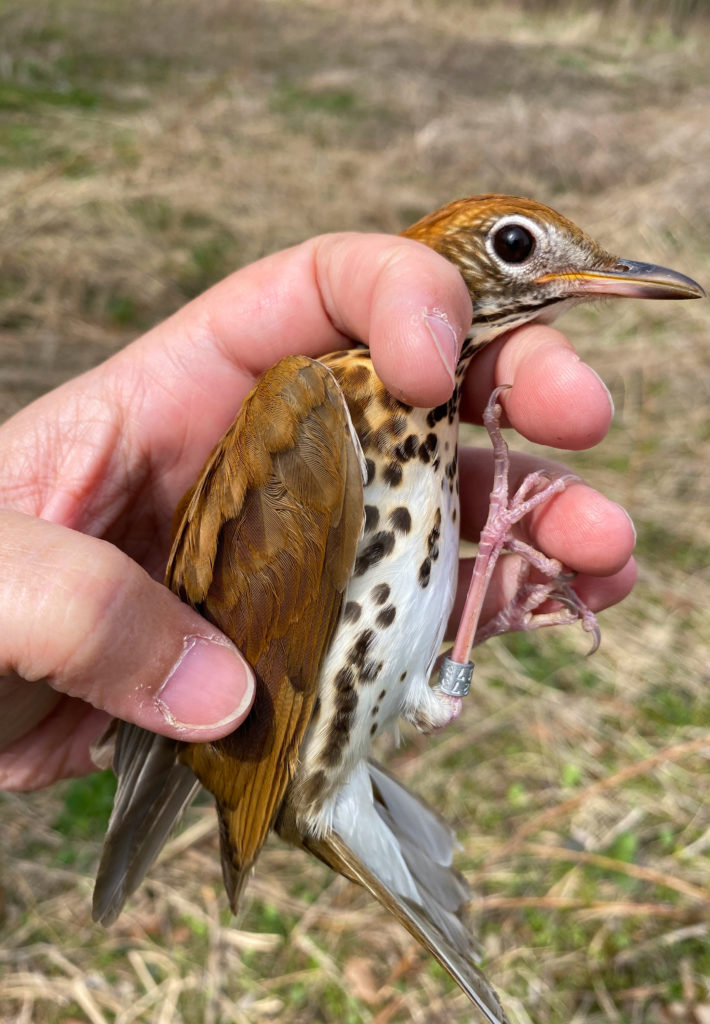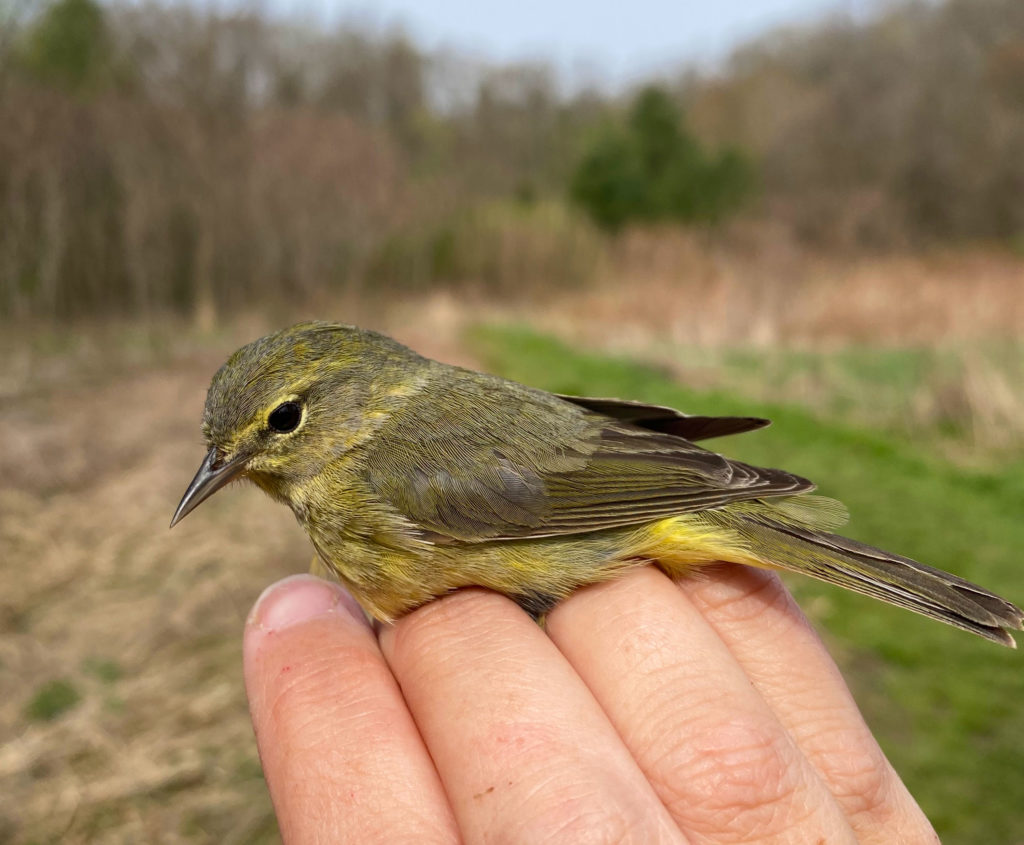May 10, 2022 – Lowville
We had an interesting day at Lowville on May 10.. the day started out rather slow with only a few birds on the first net run. We often expect the first couple net checks to be the busiest as birds are very active right at dawn. For this reason, I thought perhaps we were in for a slow day, but I was surprised when things picked up a bit around 9:30am. After a relatively quiet early morning, we started hearing (and catching!) some warblers. One of which was an Orange-crowned Warbler – our second this spring which is great considering they are an uncommon spring migrant in our area. Another highlight was an absolutely stunning Cape May Warbler in the nets at around 11:30am. I even had one last bird (a Chestnut-sided Warbler) fly into the nets at noon as I was attempting to close up. After a somewhat slow start, I was very pleasantly surprised with how the day turned out! See numbers and photo highlights below.
BANDED:
1 Least Flycatcher
3 Ruby-crowned Kinglet
2 Gray Catbird
1 Swainson’s Thrush
1 Hermit Thrush
1 Wood Thrush
4 American Goldfinch
1 Lincoln’s Sparrow
1 White-throated Sparrow
3 Baltimore Oriole
3 Common Yellowthroat
1 Orange-crowned Warbler
3 Chestnut-sided Warbler
1 Nashville Warbler
1 Black-and-white Warbler
1 Cape May Warbler
1 Rose-breasted Grosbeak
RECAPS:
1 Downy Woodpecker
1 Blue Jay
1 Black-capped Chickadee
1 American Goldfinch
1 White-throated Sparrow
TOTAL: 34 (29 banded, 5 recaps)

Cape May Warbler – a stunning male sporting some absolutely gorgeous colors. These birds are always a thrill to see up close.
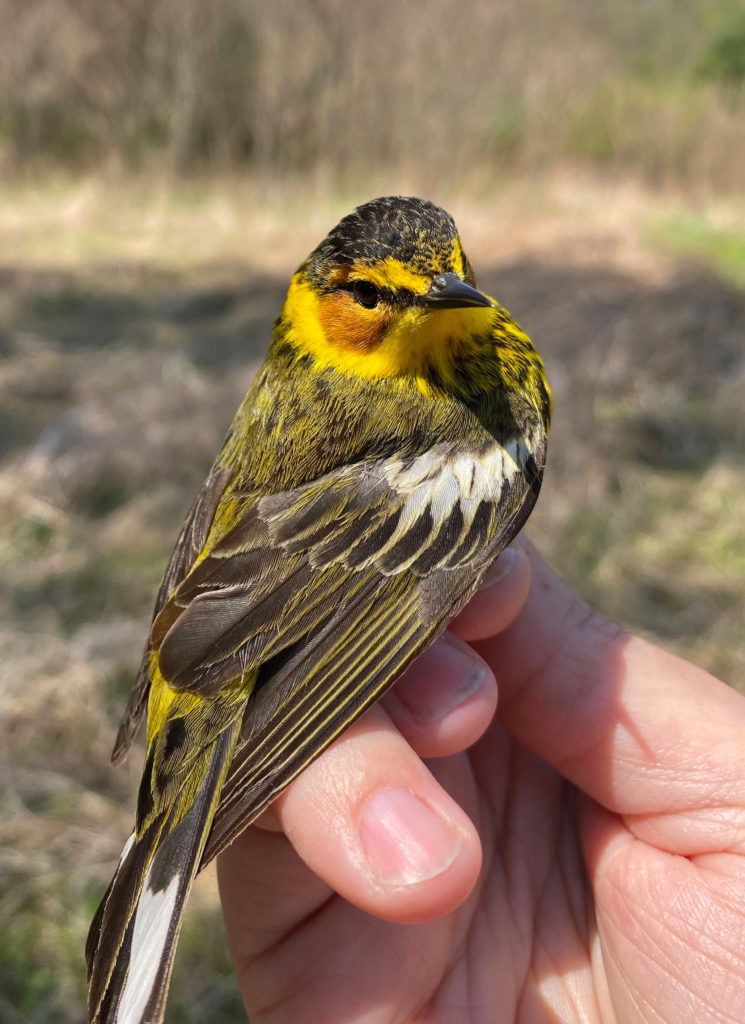
Cape May Warblers only briefly migrate through the great lakes area on their way to and from the northern boreal forest where they breed. Like a few other boreal bird species, they have a special relationship with an insect called the spruce budworm which makes up a large proportion of their diet. Cape May Warblers can have population ‘boom’ and ‘bust’ years depending on whether there has been sufficient amounts of spruce budworm for them to feed on.
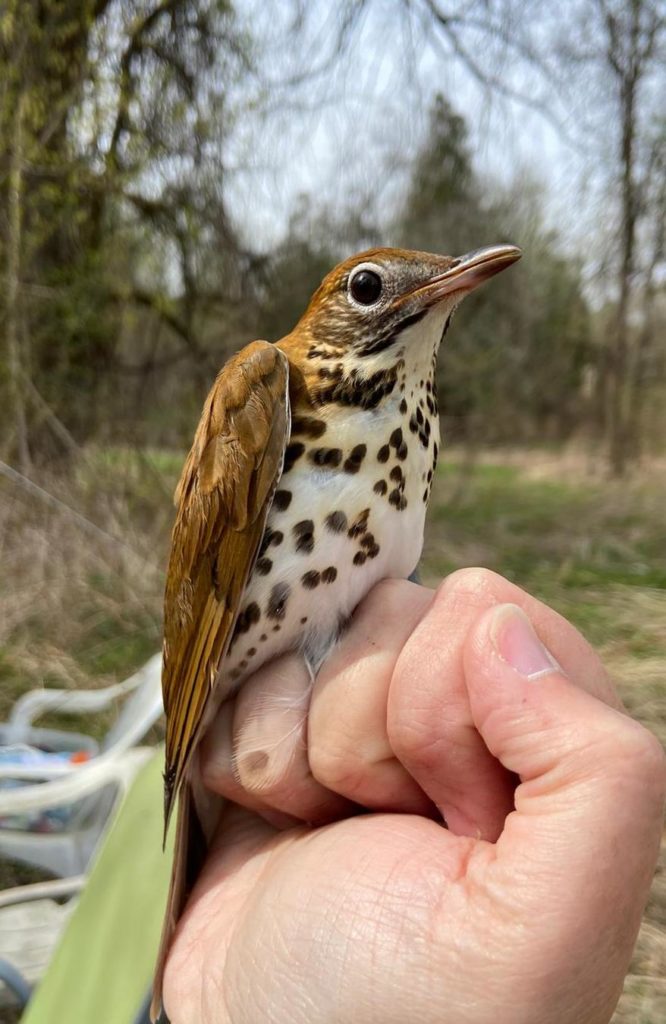
Wood Thrush – we kept hearing a Wood Thrush singing and calling throughout the morning. Mid-morning the singing briefly stopped and we were thrilled to see this bird in the net. Such a beautiful thrush. Photo: Sarah Sharp
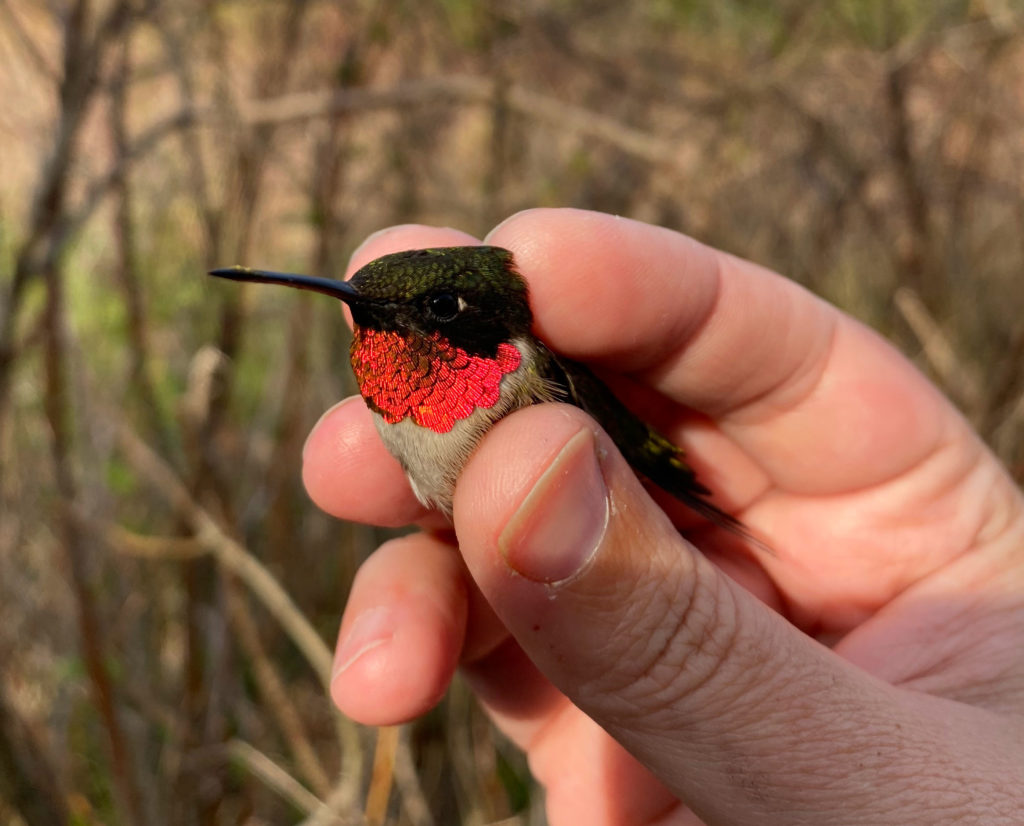
Ruby-throated Hummingbird – these little jewels have finally arrived back! We don’t band them but if we do catch them we briefly admire them for just a moment before releasing them to go on their way.
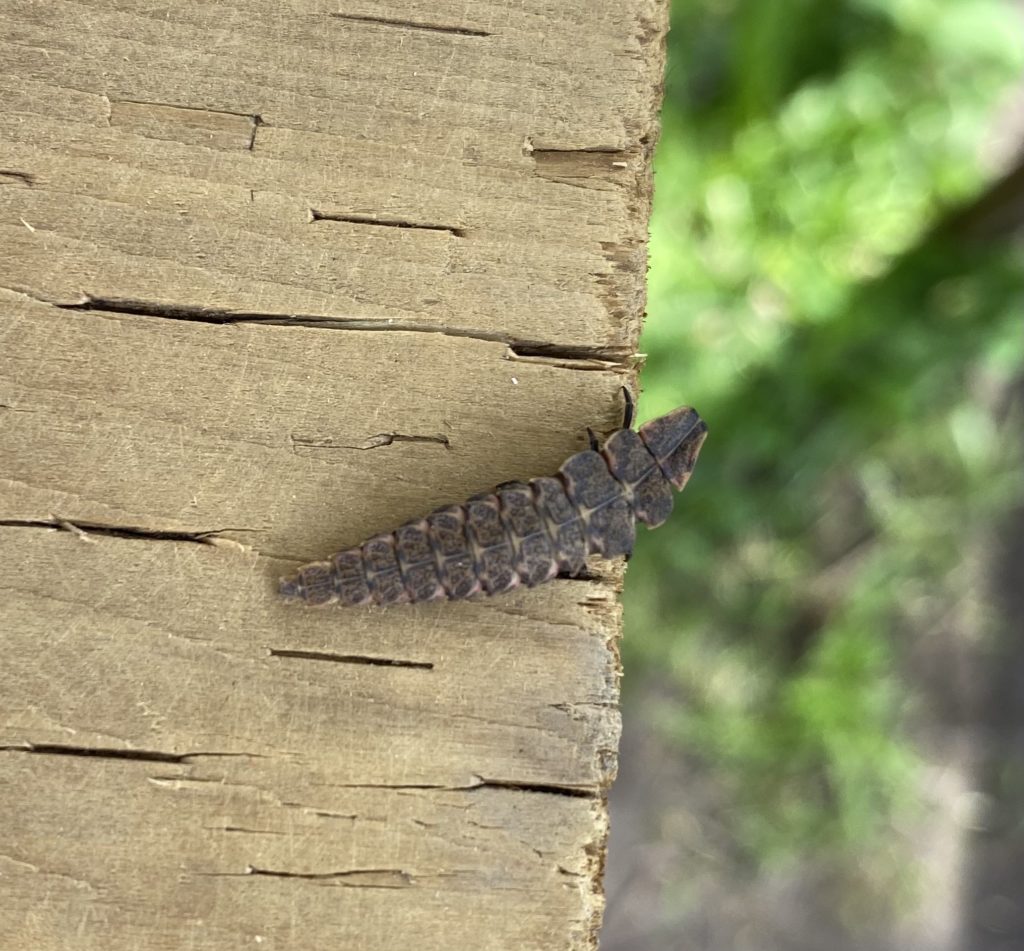
I spotted this very odd looking insect crawling on our banding table as I was doing paperwork. It almost appears armored, like an armadillo, and after some research, we discovered it is the larval stage of something called the Spring Treetop Flasher (Pyractomena borealis) – a firefly that displays in spring, as opposed to summer like most fireflies. So if you’re out on spring night, look for fireflies flashing in the trees!

